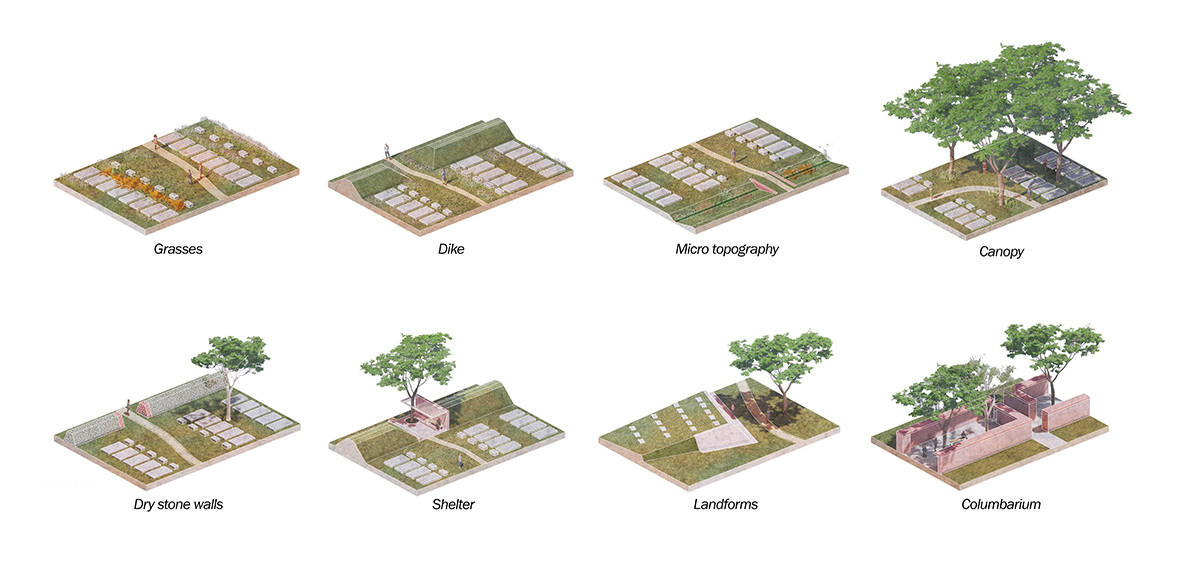


On the outskirts of Melbourne, Australia, the Greater Metropolitan Cemetery Trust wants to develop a completely new 128ha cemetery park. The growth of the city, both in numbers and in diversity, demands a high density and multicultural memorial park. Karres en Brands was asked to compete in this challenging international design competition.
Harkness Memorial Park reimagines the Australian public cemetery as a socially activated nature park cemetery. It weaves together the primary cemetery program with a range of spaces available for public uses within a rich resource-neutral native landscape.

The plan is based on 5 spatial strategies. First of all, Arnolds’ Creek is regenerated, not only as a crucial part of the sustainable watersystem of the neighborhood, but also to provide much needed public green space for the people living arund the cemetery. Second, ring parks are introduced throughout the cemetery that can both be used by visitors of the cemetery as peacefull stops to remember loved ones, but also attract life into the burial grounds, for example by introducing (landscape) art or public functions. Third, the middle spine of the park is developed first. Here all the infrastructure, functions en first burial fields will be located. Fourth, a grid of burial fields grows over time, linking to the spine for support.
Each field has different qualities and provides a lot of freedom to choose a final resting place that fits with peoples’ personal or cultural preferences. Grids of trees are planted ahead of time, to make sure that when the next field is needed there will already be shade and an intimate atmosphere during ceremonies. Last, thoughout the whole memorial park a network of public paths grows as the cemetery grows, connecting the cemetery to nature and the new neighborhoods, and connecting the dead to the living.

Zooming in, the design focuses on making comfortable spaces for people in this barren and rough Australian landscape. By breaking up the massive scale of the cemetery, the design creates intimate, personal spaces that can be used in multiple ways during burial ceremonies or as part of the public green structure of the neighborhoods. A toolbox is created with interventions that support the formation of these intimate spaces. Either by architectural or landscape interventions, the climate conditions are changed on micro-level, making Harkness Memorial a comfortable place to visit in all seasons.

| Location. | Melbourne, Australia |
|---|---|
| Assignment | Masterplan cemetery |
| Size | 128ha |
| Design | 2021 |
| Status | Competition and finalist |
| Client | The Greater Metropolitan Cemeteries Trust |
| In collaboration with | Aecom, Conversation Caravan |